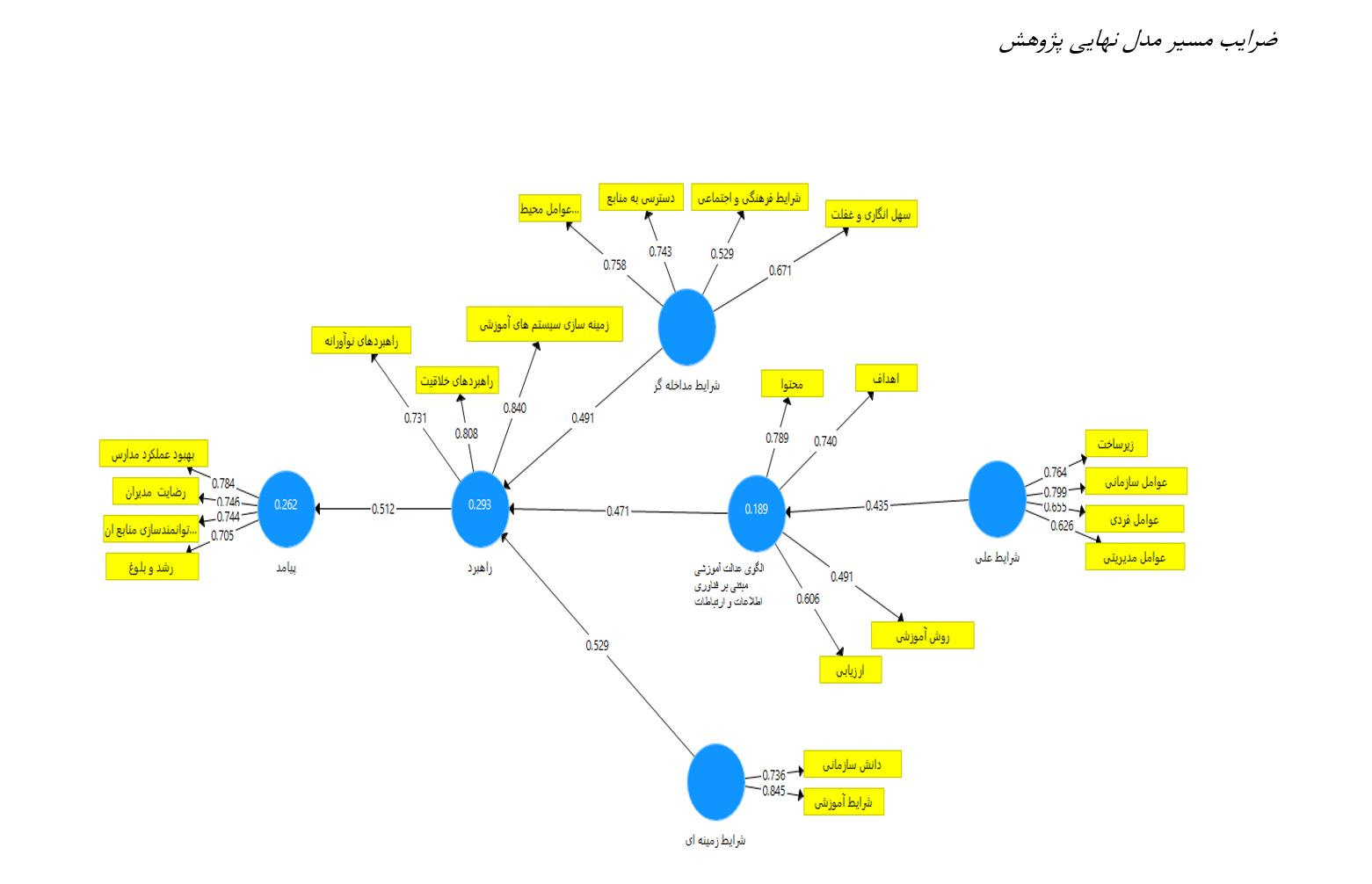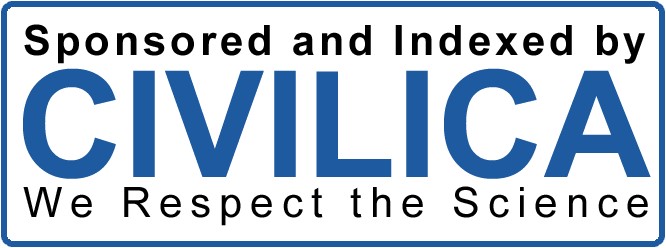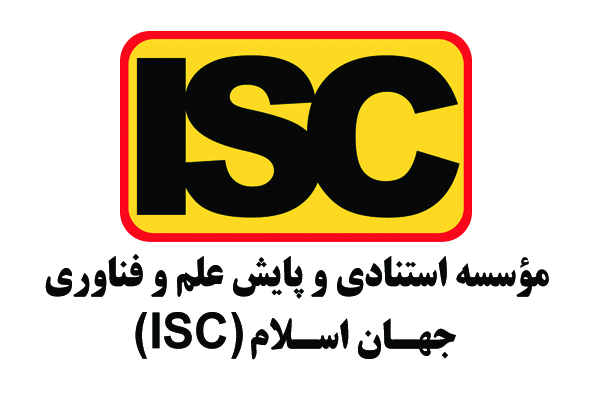Presenting and Validating an Educational Equity Model Based on Information and Communication Technology with a Blended Learning Approach in Education
Keywords:
Educational equity, Information and Communication Technology (ICT), blended learning, virtual education, teacher proficiency, institutional support, student engagement, educational policyAbstract
This study aimed to design an educational equity model based on Information and Communication Technology (ICT) with a blended learning approach. The study employed a sequential mixed-methods research design, incorporating both qualitative and quantitative approaches. In the qualitative phase, data were collected through in-depth interviews with educators, administrators, and policymakers, which were then analyzed using grounded theory to identify key components of the educational equity model. The quantitative phase involved surveys administered to a diverse sample of teachers and students to validate the findings from the qualitative phase. Statistical analysis, including structural equation modeling, was used to confirm the relationships between the identified components. The analysis revealed several critical components necessary for achieving educational equity through ICT and blended learning. These included comprehensive planning for educational opportunities, designing inclusive virtual curricula, establishing clear standards for virtual education, ensuring equitable distribution of resources, and fostering a flexible, participatory learning environment. The study also highlighted the importance of teacher proficiency in ICT, continuous professional development, and strong institutional support. Empirical evidence from the quantitative phase supported these findings, demonstrating significant improvements in student engagement, motivation, and academic performance. The integration of ICT and blended learning in education significantly enhances educational equity by providing flexible and inclusive learning opportunities. The proposed model addresses key challenges and leverages opportunities associated with blended learning, ensuring that all students have access to quality education.
Downloads
References
Ahaiuzu, B. E., Nyemezu, C. O., & Nsirim, O. (2020). Assessment of ICT Skills of LIS Educators for the Adoption of
Blended Learning in Rivers State, Nigeria. Information Impact Journal of Information and Knowledge Management,
(3), 51-62. https://doi.org/10.4314/iijikm.v11i3.6
Allayarova, S. N. (2019). Implementation of Modern Information Communication Technologies (ICT) in Higher
Education Sector: International Experience and the Example of Uzbekistan. International Journal of Innovative
Technology and Exploring Engineering, 9(1), 386-392. https://doi.org/10.35940/ijitee.a4146.119119
Anastasopoulou, E. (2024). The Impact of ICT on Education. Technium Social Sciences Journal, 58, 48-55.
https://doi.org/10.47577/tssj.v58i1.11144
Boitshwarelo, B. (2009). Exploring Blended Learning for Science Teacher Professional Development in an African
Context. The International Review of Research in Open and Distributed Learning, 10(4).
https://doi.org/10.19173/irrodl.v10i4.687
Chervonyi, P., Алєксєєва, С., Senchylo-Tatlilioglu, N., Chastnyk, O., & Diomidova, N. (2021). Peculiarities of the
Higher Education Development in a Blended Learning Environment. Revista on Line De Política E Gestão
Educacional, 2241-2257. https://doi.org/10.22633/rpge.v25i3.15959
George, G. (2024). Digital Empowerment in Education: Exploring the Dynamics and Significance of Ict – A Review.
Interantional Journal of Scientific Research in Engineering and Management, 08(01), 1-10.
https://doi.org/10.55041/ijsrem28245
Goldhaber, A. B. (2021). Impact of ICT Integration on Quality of Education Among Secondary Schools in USA. Journal
of Education, 4(6), 53-61. https://doi.org/10.53819/81018102t5015
Gumartifa, A., Larasati, F., & Aurelia, S. C. R. (2020). A Blended Learning in Ict Used for Improving English Language
Teaching. Project (Professional Journal of English Education), 3(6), 796.
https://doi.org/10.22460/project.v3i6.p796-804
Gunder, A. (2023). Centering Equity and Quality in Online, Blended, and Digital Learning. Ubiquity Proceedings.
https://doi.org/10.5334/uproc.107
Hasyim, M., & Ahmad, I. S. (2021). The Effectiveness of Implementing Blended Project Based Learning Using ICTMultimedia in Statistic Learning. https://doi.org/10.2991/assehr.k.210413.080
Ignatova, N., Kasperiūnienė, J., & Galkienė, A. (2022). Ict Scaffolding for School Education in Covid-19 Lockdown.
Society Integration Education Proceedings of the International Scientific Conference, 1, 394-403.
https://doi.org/10.17770/sie2022vol1.6873
Kotkova, V. V., & Perminova, L. (2019). Study of Kherson State University Students and Teachers' Attitudes to the
Using of Ict. Information Technologies and Learning Tools, 72(4), 194-203. https://doi.org/10.33407/itlt.v72i4.2493
Liang, M., Lim, C. P., Park, J., & Mendoza, N. B. (2022). A Review of ICT-enabled Learning for Schoolgirls in Asia
and Its Impacts on Education Equity. Educational Technology Research and Development, 71(2), 267-293.
https://doi.org/10.1007/s11423-022-10178-w
Nasrulloh, I. (2022). The Needs Analysis of Blended Learning Ipa Terpadu. icss, 1(1), 373-378.
https://doi.org/10.59188/icss.v1i1.48
Qasem, A. A. A., & Viswanathappa, G. (2016). The Teachers’ Perception Towards ICT Integration: Professional
Development Through Blended Learning. Journal of Information Technology Education Research, 15, 561-575.
Sharkova, N. (2014). Learning Supported by Technology in Higher Education: From Experience to Practice. Education
Inquiry, 5(3), 24610. https://doi.org/10.3402/edui.v5.24610
Sokout, H., Usagawa, T., & Mukhtar, S. (2020). Learning Analytics: Analyzing Various Aspects of Learners’
Performance in Blended Courses. The Case of Kabul Polytechnic University, Afghanistan. International Journal of
Emerging Technologies in Learning (Ijet), 15(12), 168. https://doi.org/10.3991/ijet.v15i12.13473
Washington, L. (2020). Using Technology to Change Education : Blended Learning in the Science Classroom.
https://doi.org/10.35542/osf.io/cyqs8
Watanabe, C., Naveed, K., & Neittaanmäki, P. (2016). Co-Evolution Between Trust in Teachers and Higher Education
Enabled by ICT Advancement – A Suggestion to ICT Growing Economies. Journal of Technology Management for
Growing Economies, 7(2), 7-38. https://doi.org/10.15415/jtmge.2016.72001
Ye, L., Kuang, M., & Liu, S. (2022). ICT Self-Efficacy, Organizational Support, Attitudes, and the Use of Blended
Learning: An Exploratory Study Based on English Teachers in Basic Education. Frontiers in psychology, 13.

Downloads
Published
Submitted
Revised
Accepted
Issue
Section
License
Copyright (c) 2024 Journal of Technology in Entrepreneurship and Strategic Management (JTESM)

This work is licensed under a Creative Commons Attribution-NonCommercial 4.0 International License.










